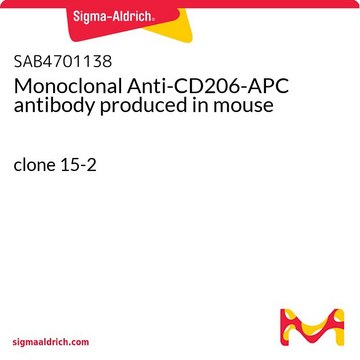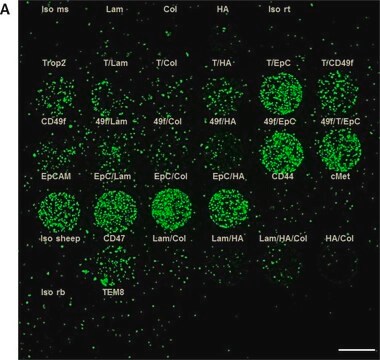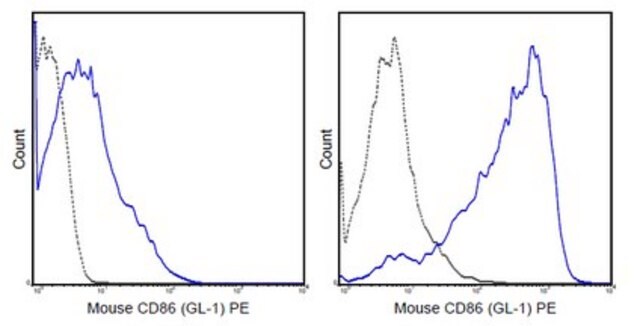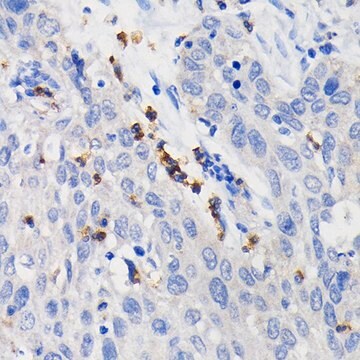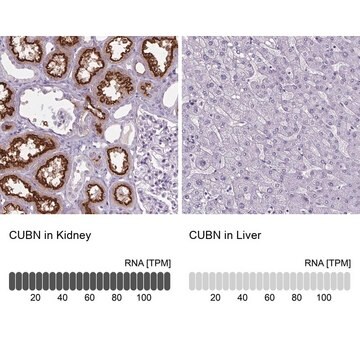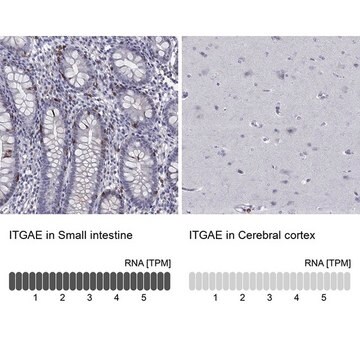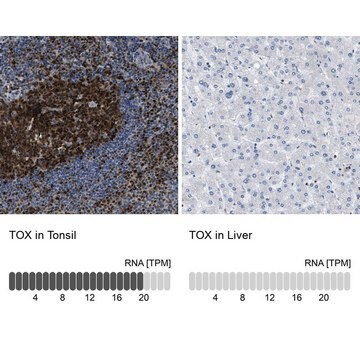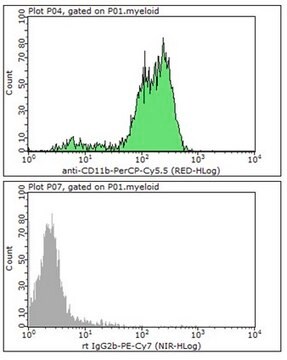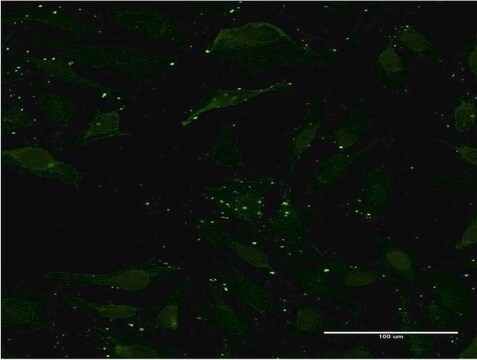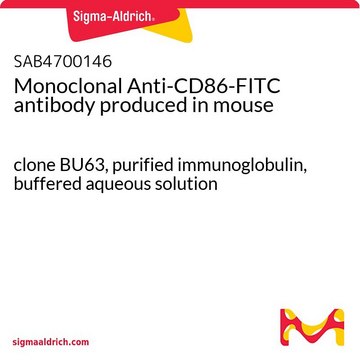SAB4700144
Monoclonal Anti-CD86 antibody produced in mouse
clone BU63, purified immunoglobulin, buffered aqueous solution
Autenticatiper visualizzare i prezzi riservati alla tua organizzazione & contrattuali
About This Item
Codice UNSPSC:
12352203
NACRES:
NA.41
Prodotti consigliati
Origine biologica
mouse
Livello qualitativo
Coniugato
unconjugated
Forma dell’anticorpo
purified immunoglobulin
Tipo di anticorpo
primary antibodies
Clone
BU63, monoclonal
Stato
buffered aqueous solution
Reattività contro le specie
human
Concentrazione
1 mg/mL
tecniche
flow cytometry: suitable
Isotipo
IgG1
N° accesso NCBI
N° accesso UniProt
Condizioni di spedizione
wet ice
Temperatura di conservazione
2-8°C
modifica post-traduzionali bersaglio
unmodified
Informazioni sul gene
human ... CD86(942)
Descrizione generale
The antibody BU63 reacts with CD86 (B7-2), a 70 kDa type I transmembrane glycoprotein of immunoglobulin supergene family, expressed on professional antigen-presenting cells, such as dendritic cells, macrophages or activated B lymphocytes.
Immunogeno
B-lymphoblastoid cell line ARH 77
Applicazioni
The reagent is designed for Flow Cytometry analysis. Suggested working dilution for Flow Cytometry is 5 μg/mL of sample. Indicated dilution is recommended starting point for use of this product. Working concentrations should be determined by the investigator.
Caratteristiche e vantaggi
Evaluate our antibodies with complete peace of mind. If the antibody does not perform in your application, we will issue a full credit or replacement antibody. Learn more.
Stato fisico
Solution in phosphate buffered saline, pH 7.4, with 15 mM sodium azide.
Esclusione di responsabilità
Unless otherwise stated in our catalog or other company documentation accompanying the product(s), our products are intended for research use only and are not to be used for any other purpose, which includes but is not limited to, unauthorized commercial uses, in vitro diagnostic uses, ex vivo or in vivo therapeutic uses or any type of consumption or application to humans or animals.
Non trovi il prodotto giusto?
Prova il nostro Motore di ricerca dei prodotti.
Codice della classe di stoccaggio
10 - Combustible liquids
Punto d’infiammabilità (°F)
Not applicable
Punto d’infiammabilità (°C)
Not applicable
Scegli una delle versioni più recenti:
Possiedi già questo prodotto?
I documenti relativi ai prodotti acquistati recentemente sono disponibili nell’Archivio dei documenti.
Grant R Kolar et al.
Blood, 109(6), 2545-2552 (2006-11-30)
We have identified a novel mature human B-cell subpopulation in the human tonsil that has characteristics of both naive B cells and germinal center B cells including the expression of activation-induced cytidine deaminase (AID), which is essential for the process
Christiane S Heilingloh et al.
The Journal of general virology, 95(Pt 6), 1366-1375 (2014-03-20)
Mature dendritic cells (mDCs) are the most potent antigen-presenting cells known today, as they are the only antigen-presenting cells able to induce naïve T-cells. Therefore, they play a crucial role during the induction of effective antiviral immune responses. Interestingly, the
Laura J Vella et al.
Cancer immunology research, 2(4), 351-360 (2014-04-26)
Combination therapy with BRAF and MEK inhibition is currently in clinical development for the treatment of BRAF-mutated malignant melanoma. BRAF inhibitors are associated with enhanced antigen-specific T-lymphocyte recognition in vivo. Consequently, BRAF inhibition has been proposed as proimmunogenic and there
Jingjuan Meng et al.
International journal of biological macromolecules, 69, 388-392 (2014-06-20)
The seaweed Laminaria japonica has been investigated in a laboratory research for its medical significance and LJP has been purified now. The objective of present study was to look at effect of LJP on structural, phenotypic and functional maturation of
Adrienne Müller et al.
International journal of cardiology, 174(3), 503-515 (2014-05-20)
Myocardial infarction and stroke are the life-threatening consequences after plaque rupture in coronary or carotid arteries. Positron emission tomography employing [(18)F]fluorodeoxyglucose can visualize plaque inflammation; however, the question remains whether this is specific for plaque vulnerability. The pathophysiology of vulnerable
Il team dei nostri ricercatori vanta grande esperienza in tutte le aree della ricerca quali Life Science, scienza dei materiali, sintesi chimica, cromatografia, discipline analitiche, ecc..
Contatta l'Assistenza Tecnica.